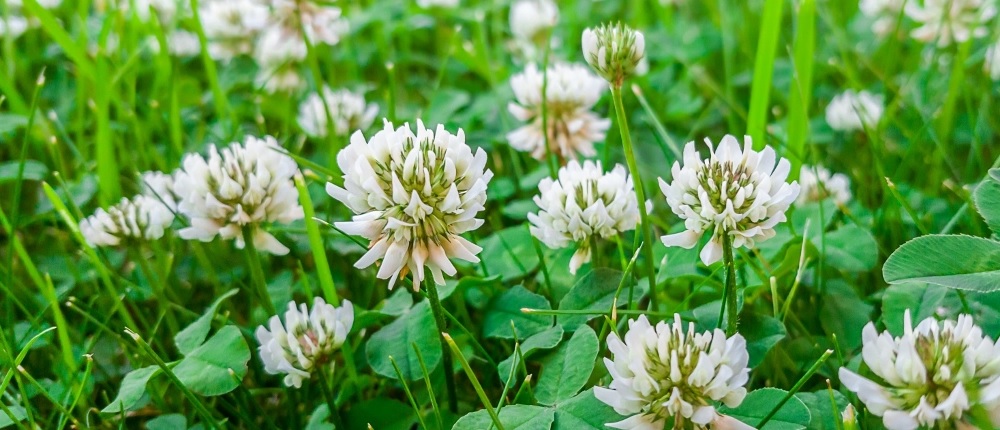Wonderful wildflowers around The Woollen Mill
The fields and lanes around The Woollen Mill boast incredible biodiversity. This is in large part due to the impressive hedgerows which border the lanes. Local farmers have also played their part in promoting biodiversity by preserving field margins which provide crucial habitats for a variety of species. In the spring, the hedgerows and fallow meadows come alive with splashes of gorgeous colour courtesy of the wildflowers. It’s worth taking your time as you explore the area to appreciate the lovely flowers which light up the landscape until early autumn. Below you will discover the pretty blooms that you might see on your walks close to the mill.
THE COLOURFUL BLOOMS OF GWYNEDD
HERE’S WHAT YOU CAN EXPECT TO SEE!
Red Campion
Possibly my favourite hedgerow flower, red campion (Silene dioica) grows prodigiously in the lanes around The Wooollen Mill. As you can see, the flowers are a rather beautiful shade of pink and not red. Appearing just after the bluebells finish flowering, these pretty blooms boast strong links to myths and mysticism.They are said to guard bees’ honey stores and to protect fairies from being discovered. They are favourites of many insects and you will see them in lightly shaded woodland areas, along hedgerows, in fields and ditches and on roadside verges.
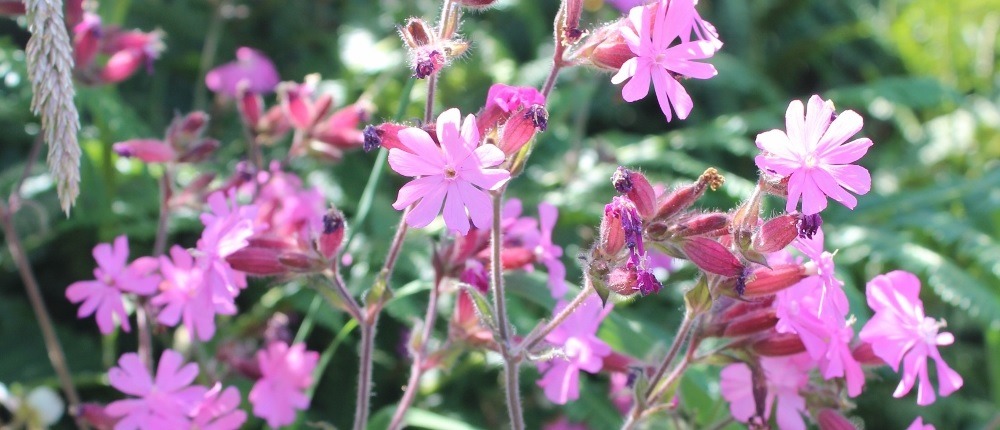
Foxglove
We love the spikes of pink flowers that spring up and adorn the lanes between June and September. The Foxglove (Digitalis purpureais) is a striking bloom and the flowers are an important source of nectar for bees. The markings on the petals were once thought to be the hand prints of fairies who would give the corollas of the plant to foxes. The foxes would then posses the magical power to sneak up on poultry in silence. The plant contains a chemical called digitalis that can be used to treat heart failure. However, Foxgloves are poisonous if eaten.
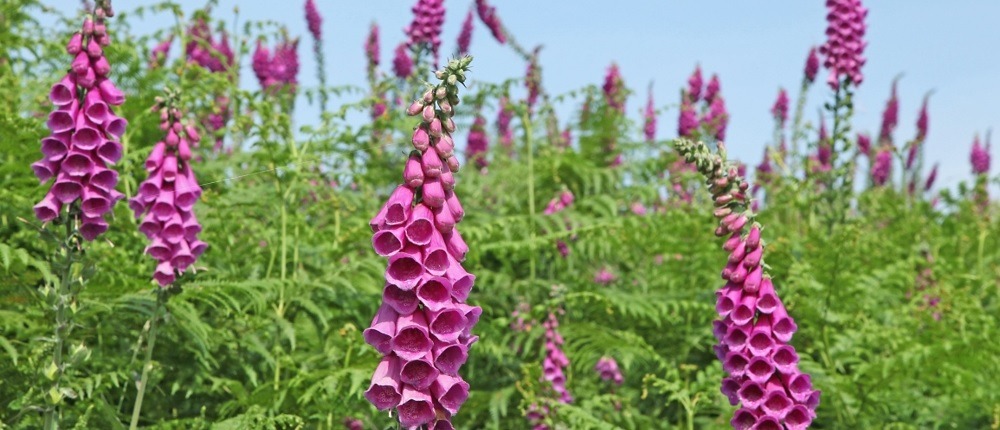
Greater Stitchwort
Visited by honeybees, butterflies and hoverflies looking for nectar, greater stitchwort (Stellaria holostea) delivers pretty star-shaped white flowers to the lanes. Also known as Star-of-Bethlehem and wedding cakes, this lovely flower provides a wonderful contrast to the pink blooms of red campion in the hedgerows. You will see it between April and June, sometimes later, and the seed pods pop when they ripen. Greater Stitchwort is used as a herbal remedy to cure the stitches some people experience when they exercise!
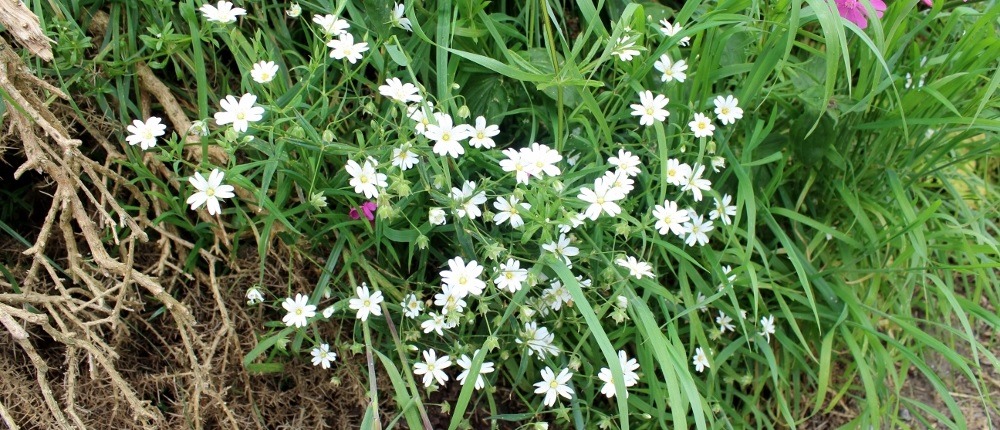
Columbine
Far from common and so a star of the hedgerow show, columbine (Aquilegia vulgaris) is an eye-catching flower. Also called granny’s nightcap’ or granny’s bonnet, its flowers resemble little purple bonnets. In bloom throughout May and June, columbine is a tall plant which favours damp areas. It is a valuable source of nectar for bees and is truly beautiful. However, many columbines that you see growing wild are actually garden escapees rather than native plants. Wherever they came from, our Columbines are very welcome to stay!
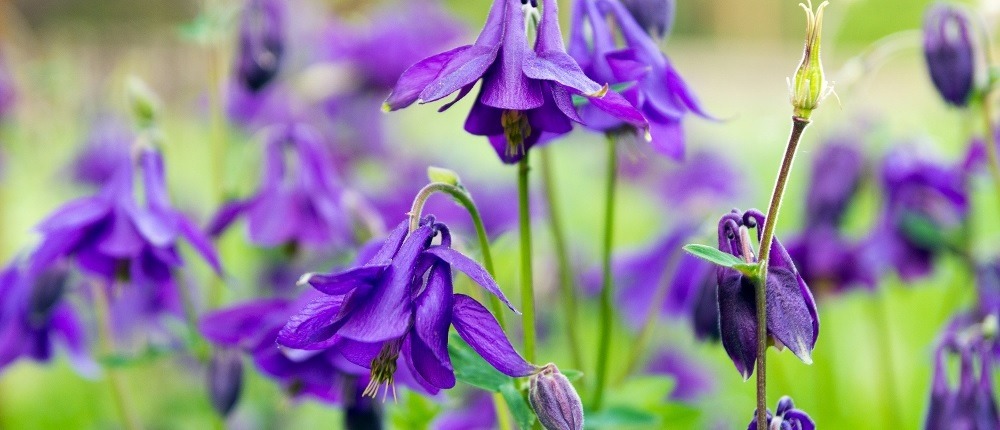
Bluebell
There is no more glorious site than a carpet of bluebells lighting up the woodland. In many areas of the country, bluebells (Hyacinthoides non-scripta) are now rare but around here, there is no such problem. The woods come alive in May, including the area opposite The Woollen Mill. Woodland butterflies, bees and hoverflies all feed on bluebell nectar and if you love this flower, head for Beddgelert Forest and Hafod y Llyn where you can admire spectacular displays in the spring. Did you know that fairies use bluebells to trap humans and if you hear a bluebell ring, a bad fairy will appear?
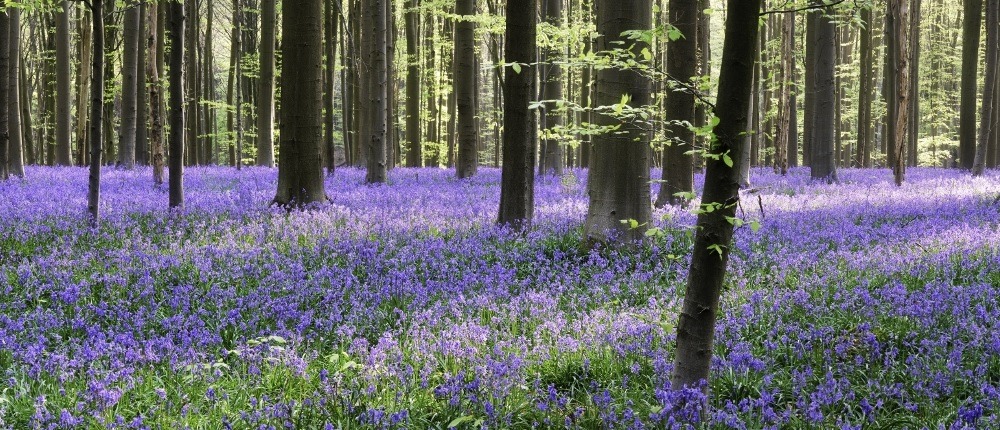
Honeysuckle
You don’t have to walk very far to see honeysuckle (Lonicera periclymenum) around here! It grows in the lane outside The Woollen Mill and it is a beautiful sight. It’s pretty, it’s fragrant and it is vital for wildlife. Honeysuckle supports many species, some rare, including the white admiral butterfly, pollinating moths, thrushes, bullfinches and bumblebees. Flowering from June to September, it was once thought to bring good luck and ward off evil spirits if it grew around your home. Clusters of red berries ripen in autumn to contribute yet more colour to the gorgeous hedgerows.
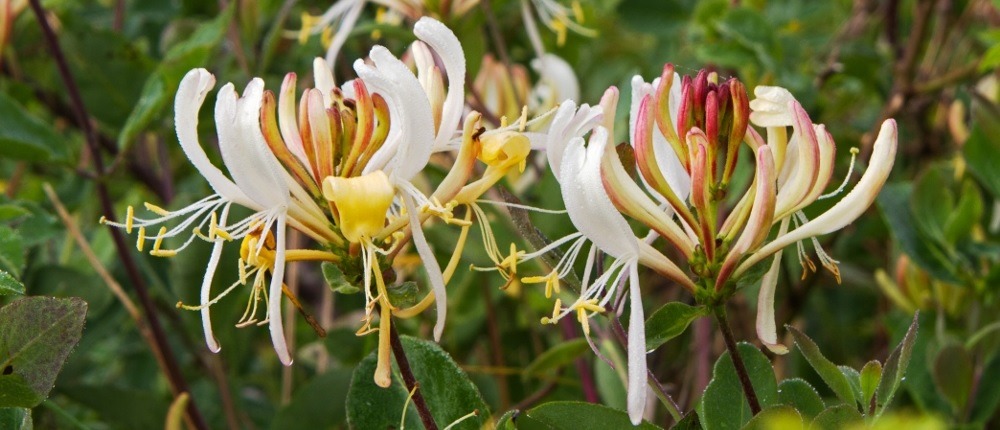
Oxeye Daisy
Another bloom that you won’t have walk far to see, the oxeye daisy (Leucanthemum vulgare) flowers from June to October. A few of these attractive flowers tend to spring up each year in the lane right opposite the entrance to The Woollen Mill. The flowers can be up to 6cm across and are symbolic of patience. You will see the large daisies in the meadows, on scrub land and occasionally on grass verges. This species used to be known as the moon daisy because the flowers appear to glow in the meadows after dark.
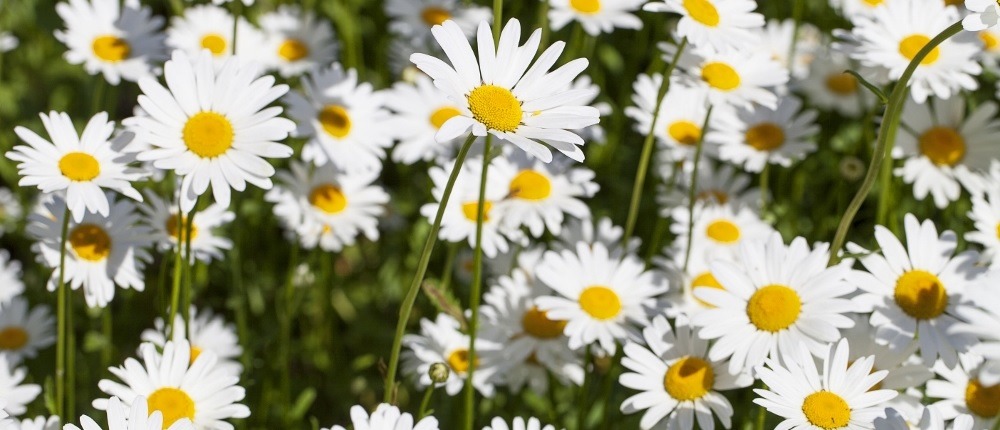
Sea Holly
I bought a sea holly for the garden because the gorgeous blue hue looked rather exotic. I thought I was investing in a species that I would never see in the wild and so I was shocked to find these plant growing on the dunes behind Dinas Dinlle beach! Sea holly (Eryngium) is a genus of plants with some 250 species. These can be annual or perennial herbs and they attract pollinators. I have no idea which species I see growing locally but they look beautiful. Sea holly is symbolic of admiration and that seems incredibly appropriate!
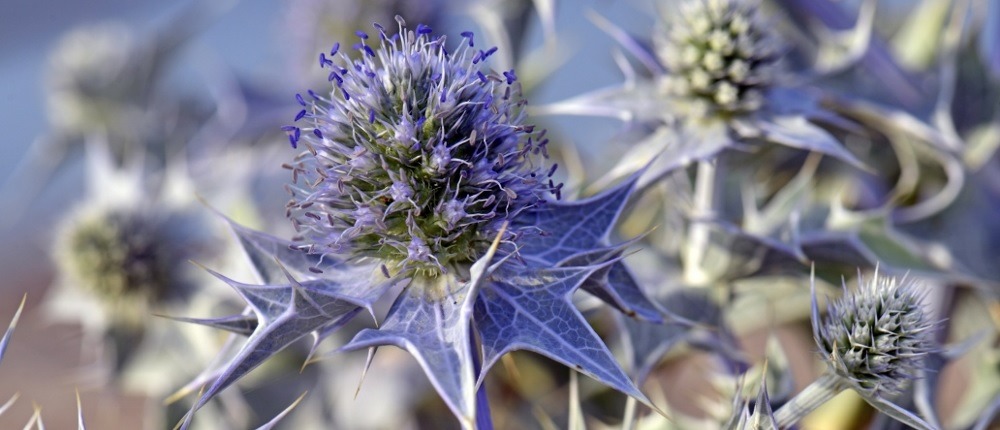
Herb Robert
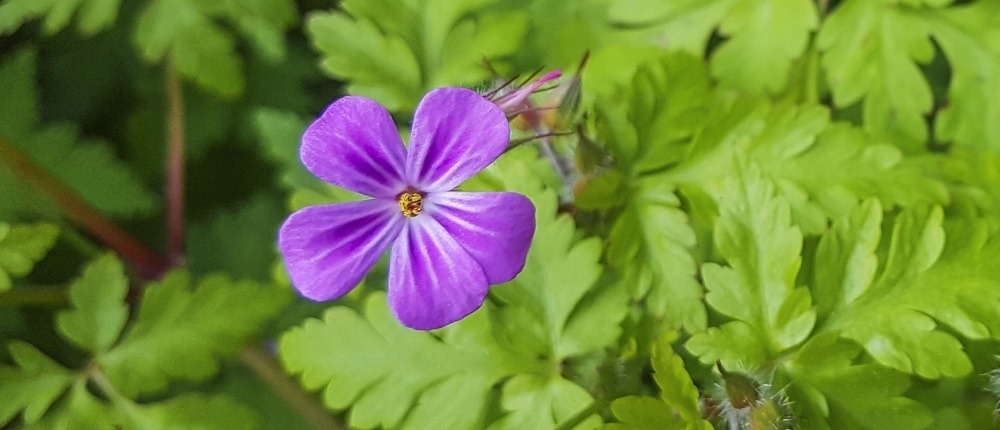
Common Dog-Violet
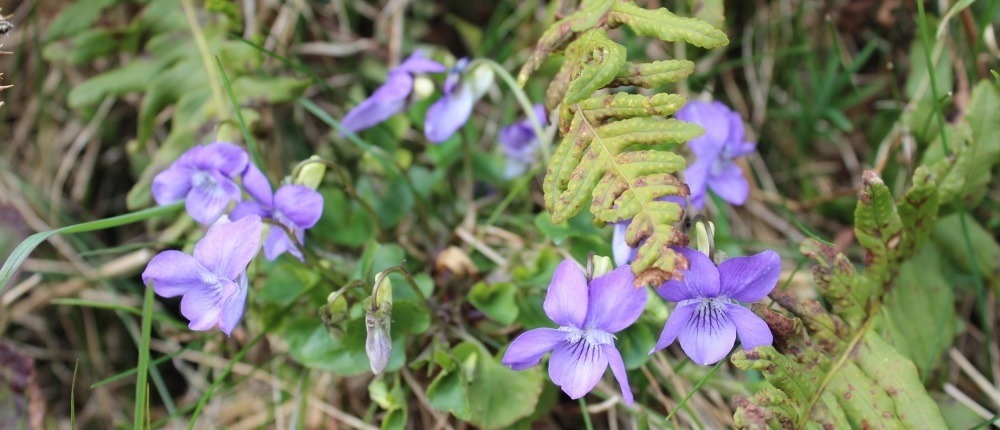
Autumn Hawkbit
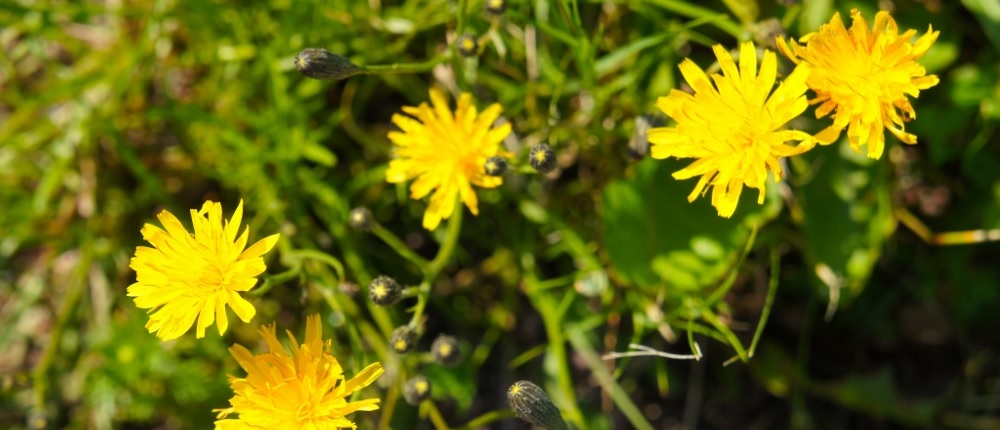
White Clover
White clover (Trifolium repens) is a common perennial that boasts heads of whiteish globe-shaped flowers with tinges of pink that appear with aging. Found in the lanes around The Woollen Mill, white clover attracts both bumblebees and honey bees. The leaves are trifoliate, hence the clover moniker. White clover is an interesting plant as it can grow in any type of soil, can fix nitrogen and can out-compete weeds. it is grown as a forage species as its leaves are high in protein.
